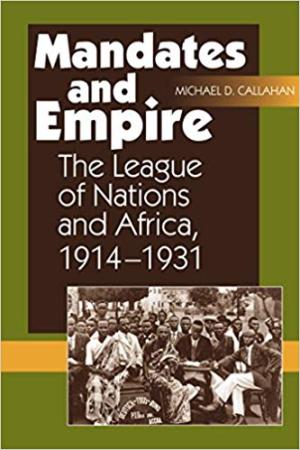This year is the Centennial of the signing of the Treaty of Versailles. Signed on 28 June 1919 in the Hall of Mirrors at Versailles Palace, the Treaty was the most important of the peace treaties that brought an end to World War I. To mark this anniversary, the Peace Palace Library has put together a collection of books exploring the background and aftermath of the Versailles Treaty. Part V: Mandates.
The mandate system was created in the aftermath of World War I to resolve the question of jurisdiction over the colonial territories detached from Germany and the Ottoman Empire. Article 119 of the Versailles required Germany to renounce sovereignty over former colonies and Article 22 converted the territories into League of Nations mandates under the control of Allied states. Togoland and German Kamerun (Cameroon) were transferred to France. Ruanda and Urundi were allocated to Belgium, whereas German South-West Africa went to South Africa and the United Kingdom obtained German East Africa.
As compensation for the German invasion of Portuguese Africa, Portugal was granted the Kionga Triangle, a sliver of German East Africa in northern Mozambique. Article 156 of the treaty transferred German concessions in Shandong, China, to Japan, not to China. Japan was granted all German possessions in the Pacific north of the equator and those south of the equator went to Australia, except for German Samoa, which was taken by New Zealand.
Mandates, Versailles and Books
- Crozier, A.J., "The Establishment of the Mandates System 1919-25: Some Problems Created by the Paris Peace Conference", in: 14 Journal of Contemporary History (1979), pp. 483-513. [Not available in PPL collection]
- Hall, H.D., Mandates, Dependencies and Trusteeship, London, Stevens, 1948.
- Margalith, A.M., The International Mandates: A Historical, Descriptive, and Analytical Study of the Theory and Principles of the Mandates System, Baltimore, Johns Hopkins Press, 1930.
- The Mandates System: Origin, Principles, Application, Genève, League of Nations, 1945.
- Wright, Q., Mandates under the League of Nations, Chicago, University of Chicago Press, 1930.
Treaty of Versailles Centennial
The Treaty of Versailles was the most important of the peace treaties that brought World War I to an end. The Treaty ended the state of war between Germany and the Allied Powers. It was signed exactly five years after the assassination of Archduke Franz Ferdinand, which had directly led to the war. The other Central Powers on the German side signed separate treaties. Although the Armistice, signed on 11 November 1918, ended the actual fighting, it took six months of Allied negotiations at the Paris Peace Conference to conclude the peace treaty. The treaty was registered by the Secretariat of the League of Nations on 21 October 1919.
